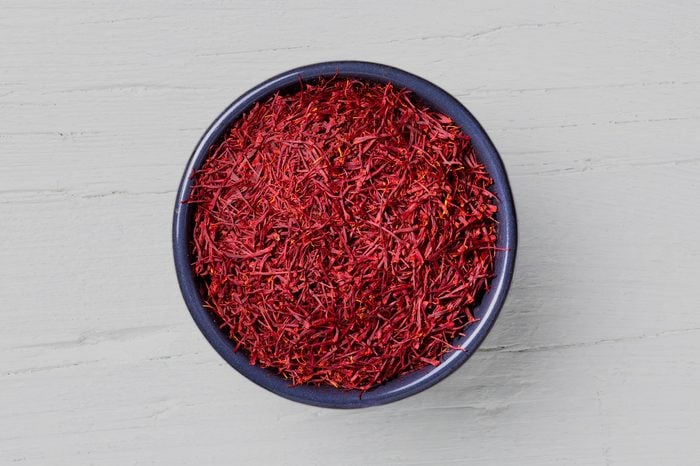
Best: Saffron
“Saffron contains anti-inflammatory ingredients that discourage fat cell expansion,” Alan Roberts, PhD, tells Woman’s Day. This reduces cellulite by increasing circulation between tissues and increasing muscle tone under the skin, eliminating valleys on the surface to give skin a smoother and stronger appearance.
“I add saffron to chicken, rice, and roasted cauliflower dishes,” says Jenna Appel, MS, RD, of Appel Nutrition in Boca Raton. “It gives a gourmet taste, aroma, and beautiful colour. You can also make a healthy and refreshing tea using saffron threads, water, and fresh ginger.”
Here are the best foods to prevent ulcers.
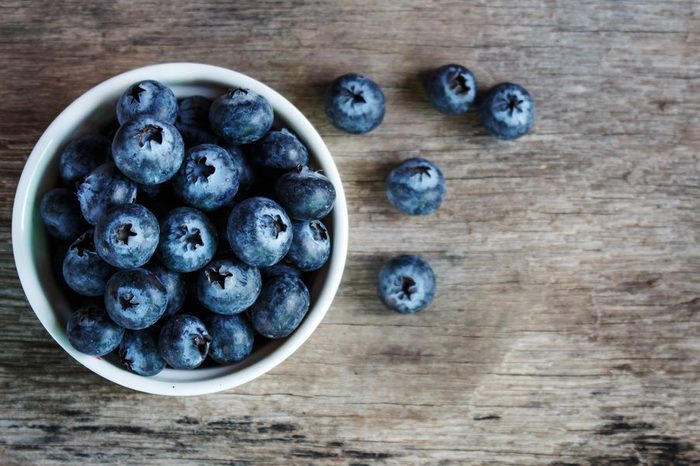
Best: Dark berries
Dark varieties of fruit like blueberries and blackberries enhance collagen production, encouraging new skin tissue growth, Lori L. Shemek, PhD and certified nutritional consultant, tells Woman’s Day—and this improves skin’s texture and tone. The berries also boast antioxidants, which can reduce the inflammation that makes cellulite more apparent. Eating these foods also may help prevent signs of aging like dryness and wrinkles. Nutritionist Appel notes: Consuming fruits and vegetables raw and fresh offers more antioxidants than cooked. “I love adding blueberries to my overnight oats for a naturally sweet flavour,” says Appel. “Or toss a handful to a salad, smoothie, or whole-grain pancakes.”
Don’t miss these 23 foods that lower blood pressure.
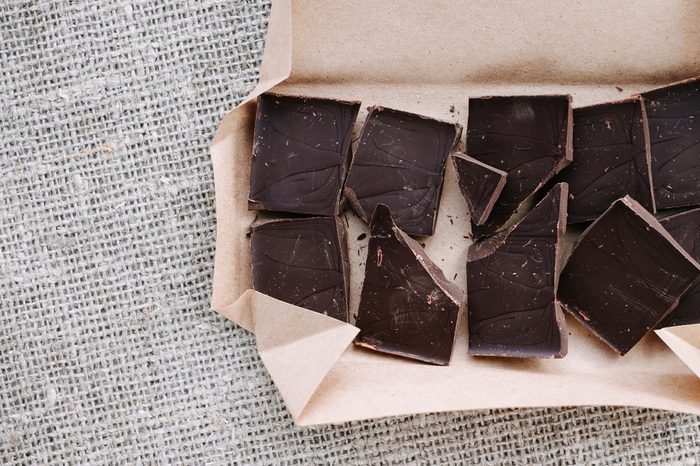
Best: Dark chocolate
“I’m dark-chocolate obsessed!” says Isabel Smith, MS, RDN, CDN, founder of Isabel Smith Nutrition. “The darker the better because you get more cocoa, which is its majorly beneficial component.” Chocoholics rejoice. Dark chocolate is a good source of nutrients like magnesium and iron. “Cocoa does have some interesting research for supporting the cardiovascular system, which is critical for blood flow around the body,” says Ginger Hultin, a registered dietitian and spokesperson for the Academy of Nutrition and Dietetics. She likes to mix cocoa with a frozen banana and nondairy milk to create a smoothie that’s naturally sweet and chocolatey without having to add sugar or saturated fat. “You can add cocoa to a lot of foods that are healthy—think yogurt, oats, or coffee,” she says.
Check out these 13 ways to get the most out of farmers’ markets year-round.
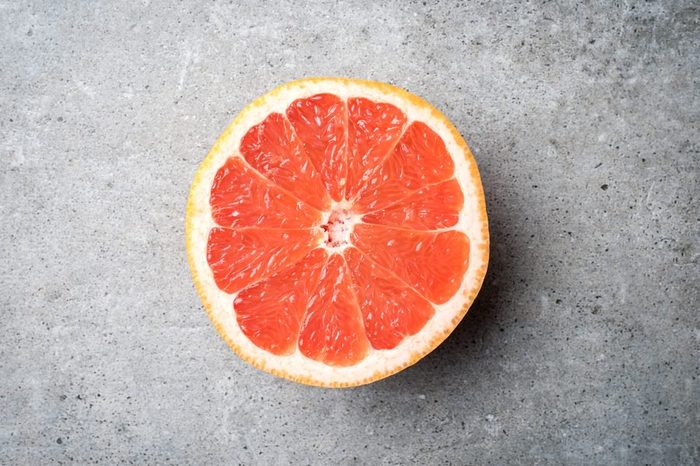
Best: Grapefruit
Any foods that deliver anti-inflammatory nutrients and hydration will help battle cellulite, says Kristin Kirkpatrick, MS, RDN, manager of wellness nutrition services at Cleveland Clinic. They’ll also improve your skin’s integrity.
“Combine grapefruit with a healthy protein and a fat,” says nutritionist Rania Batayneh, MPH, owner of Essential Nutrition For You. “Make a grapefruit, avocado, and salmon salad. It has so much flavour and is rich in nutrients and healthy fats from avocado and salmon.” She also suggests mixing half a grapefruit with cinnamon-coated almonds and one cup of plain Greek yogurt.
These are the 12 groceries that are worth buying organic.
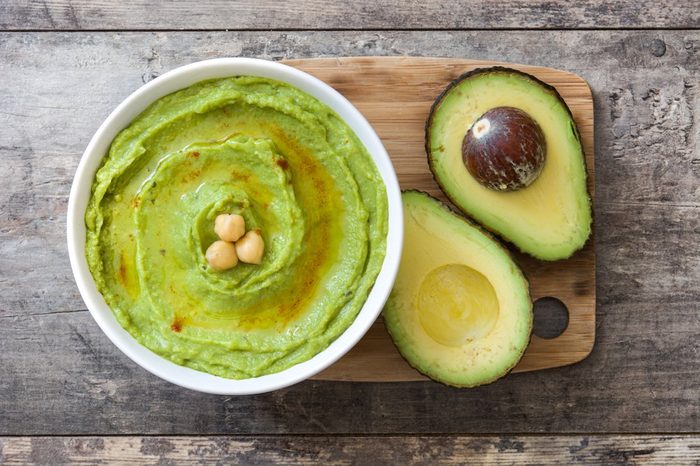
Best: Avocado
Bring on the avocado toast. Avocados are high in good fats and fibre. Fibre helps the body balance glucose levels and flush out cellulite-forming toxins, says Smith. “I love it on toast, in a smoothie, or as a dip (simply mashed).”
Make sure you know these 30 painless ways to increase dietary fibre.
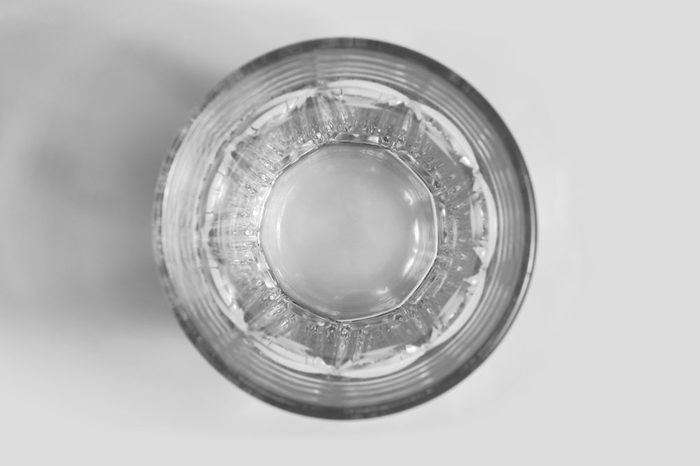
Best: Water
Water helps promote the body’s natural detox process and flush out toxins. “Your body is comprised of about 60 per cent water,” says Janet Brill, PhD, RDN, and author of Blood Pressure Down. “Hence skin cells (like all cells) contain a large amount of water. Keeping your skin cells hydrated equates to healthy cells.” She suggests using the urine-color test to assess if you’re getting enough water. “Drink enough water so that your urine maintains a light straw colour.”
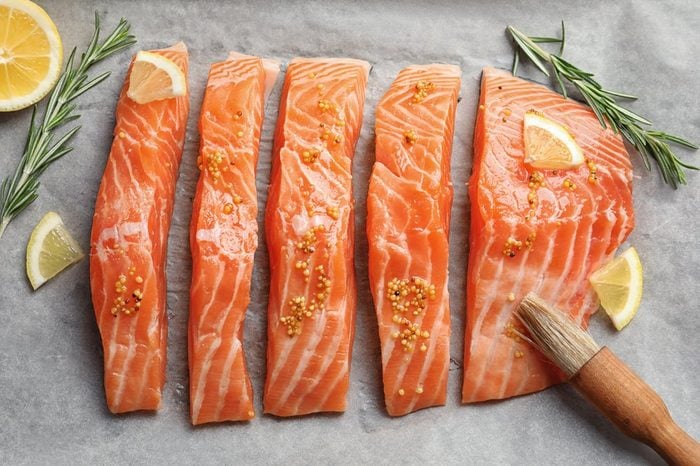
Best: Salmon
Eating salmon—and other fatty fish such as mackerel, tuna, and trout—will improve the overall condition and appearance of your skin. That’s all thanks to the array of nutrients in fish. High amounts of omega-3 fatty acids (healthy fats) help reduce inflammation, which can affect how your skin looks, Dr. Shemek told Woman’s Day. Plus, The vitamin D and niacinamide in salmon may reduce your risk of skin cancer and niacinamide also helps keep skin hydrated. Dr. Brill suggests eating at least three fatty fish meals per week. “Use canned salmon whenever you’d typically use canned tuna fish,” she says. “Think smoked salmon, glazed salmon, grilled salmon, poached salmon, cold-cooked salmon, scrambled eggs with salmon, salmon burgers, salmon salad, oven-crusted salmon sticks.”
This easy chart will tell you which fish have the most omega-3s.
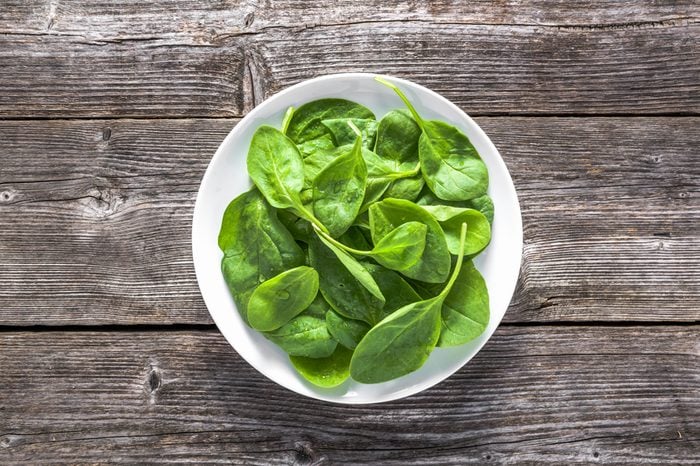
Best: Leafy greens
Powerhouse veggies like kale and spinach boast nutritious magnesium and fibre. “Fill half your plate with vegetables, including leafy greens, at every meal,” says nutritionist Chanel Kenner. These two are packed with lutein and zeaxanthin, which help protect and hydrate skin cells and keep skin damage at bay. Try them in salads, smoothies, omelettes, stir-fries, soups, stews, sandwiches, sautés, and as snacks. “I love adding baby spinach to my smoothies,” says Batayneh. She suggests combining baby spinach with an apple, pea protein milk, and avocado oil or fresh avocado.
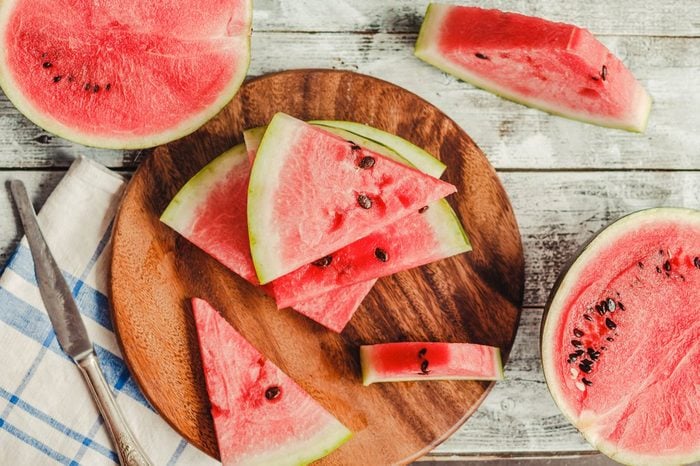
Best: Watermelon
Lycopene is a powerful antioxidant that gives watermelon its colour. Lycopene improves blood circulation and that can help smooth out cellulite over time. “While lycopene is an antioxidant, it helps prevent aging and may help fight disease,” says Lisa R. Young, PhD, RDN, nutritionist and author of Finally Full, Finally Slim.
The low-calorie fruit’s high water content helps hydrate skin. “Staying hydrated is key to fighting the appearance of cellulite,” says Erin Palinski-Wade, RD, LDN, a nutrition consultant and author of Belly Fat Diet For Dummies. “Drinking adequate water is key, but eating foods rich in water such as watermelon (which is made up of 92 per cent water) can help.”
Find out what an appetite for spicy foods says about your personality.
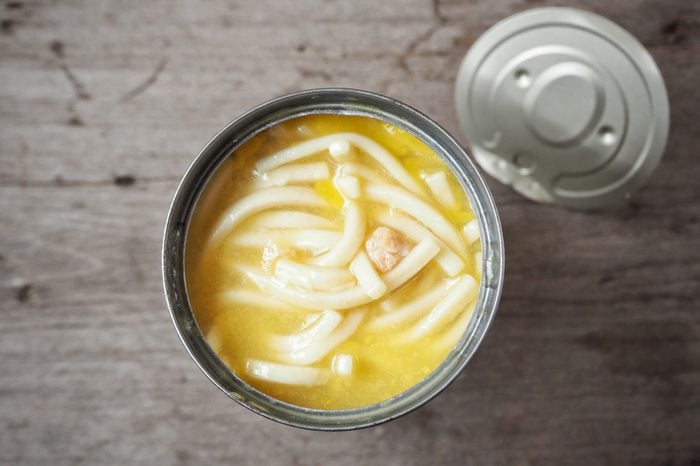
Worst: Canned soup
Canned soup may be convenient, but most contain a shocking amount of added sugar and salt. “Although the fluid in soup is hydrating, eating a large amount of sodium can lead to water retention,” warns Palinksi-Wade. “Although water weight doesn’t increase cellulite, it can make its appearance more visible.” If you want to warm up with soup, read labels, she advises. Tomato, butternut squash, and sweet potato flavours are likely to have more added sugar than others, for example. Avoid ingredients like sugar, cane sugar, high-fructose corn syrup, and evaporated cane juice. Opt for versions that are broth-based, full of vegetables, and use whole-grain starches such as brown rice, says Palinksi-Wade. “Soups packed full of veggies, lean proteins, and whole grains will contain nutrients that can help fight against inflammation, helping decrease the appearance of cellulite,” she says.
Don’t miss these 10 healthy lunch ideas from around the world!
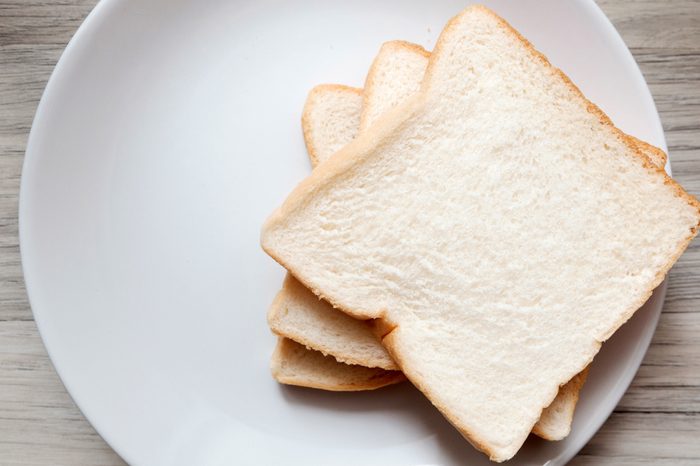
Worst: White bread
White flour products (breads, rolls, crackers) white rice, white potatoes, and many breakfast cereals are refined carbohydrates. These high-glycemic index foods fuel the production of advanced glycation end (AGE) products that stimulate inflammation, says Arthritis.org.
“When you’re looking for bread, choose a whole-wheat or whole-grain bread in which the first ingredient is a ‘whole’ type of flour,” says Amy Gorin, MS, RDN, owner of Amy Gorin Nutrition in New York. “This reveals that the bread contains plenty of good-for-you whole grains.”
Here’s the real difference between whole wheat and whole grain.
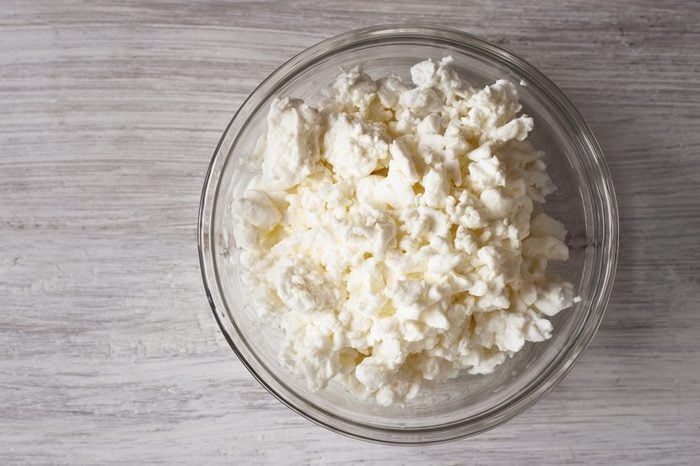
Worst: Cottage cheese
Despite its healthy reputation, cottage cheese contains loads of salt. As with canned soup, all that sodium (salt) can cause your body to retain fluid and make cellulite more apparent. Retaining water works against hydration—the water turnover that helps cleanse your body and keep your skin healthy. Water retention aggravates the appearance of cellulite, and salt can make that happen very quickly: “Just one cup of cottage cheese has over 800 mg of sodium,” says Hultin. “The American Heart Association suggests limiting to 2,300 mg per day and ideally 1500 mg for most adults.” If you’re craving cottage cheese, try a variety that has no salt added. “You can flavor it with herbs, spices, or fruit while still getting the nutrients and protein from cottage cheese,” she says. Or eat plain Greek yogurt instead and flavour it yourself so you can control the portions of ingredients, recommends Hultin. It’s a good low-salt, high-protein alternative. “Read the labels on all yogurt to ensure you’re not getting adding sugars,” she says.
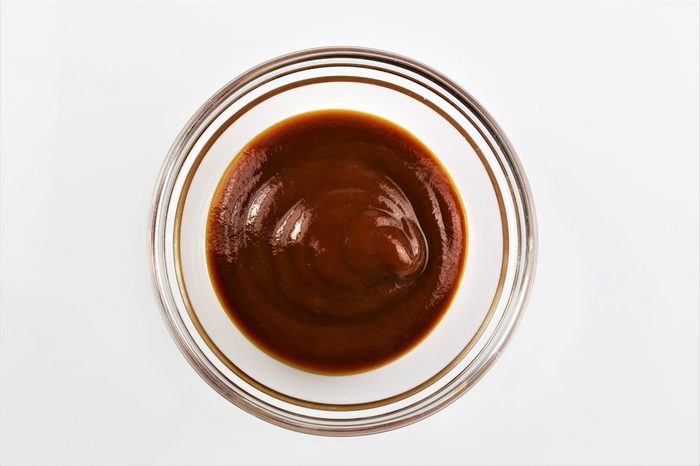
Worst: Barbecue sauce
It’s certainly healthier to grill your food than to fry it—but not if you’re drowning your meats in sugary barbecue sauce. “There is a link between sugar and skin aging and blood vessel damage, caused by inflammation and glycation (bonding of sugar to protein or lipids),” says Kenner. “Glycation, over time, can damage collagen and elastin, giving skin an aged, fragile, and dull appearance.” It weakens blood vessels, too, she says, leading to water retention and poor circulation. “Fat accumulation, water retention, glycation, and inflammation all contribute to the formation of cellulite.” One tablespoon of barbecue sauce can have six grams of sugar. Read food labels to find versions lower in sugar, sodium, and calories. Avoid ones with sneaky words for sugar, says Kenner, like corn syrup, fructose, dextrose, malt syrup, and sucrose.
Next, find out the 25 ways sugar is making you sick.